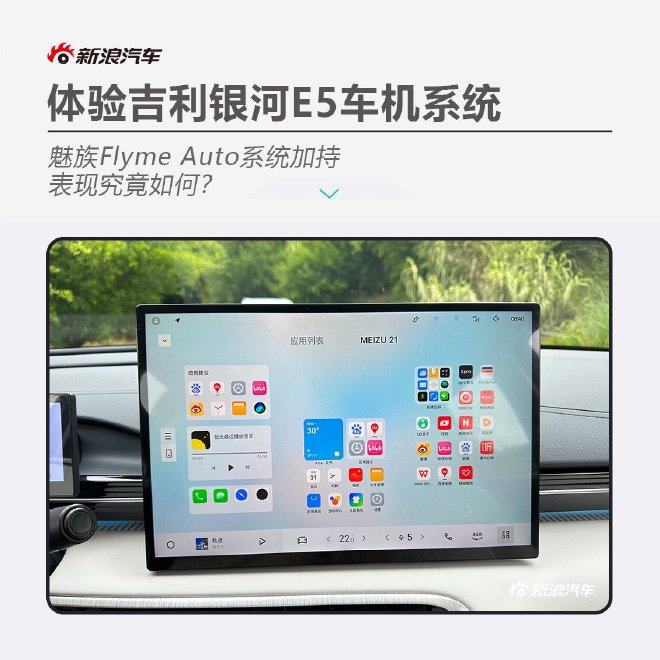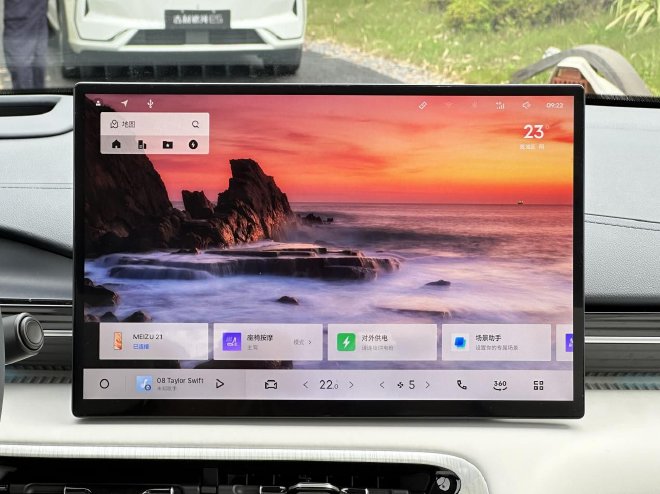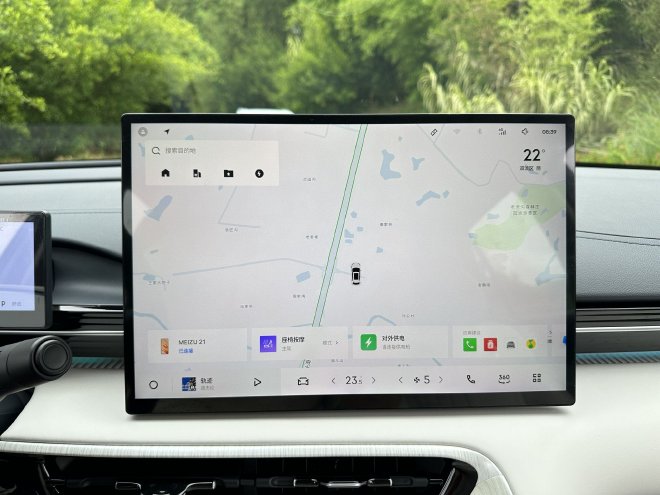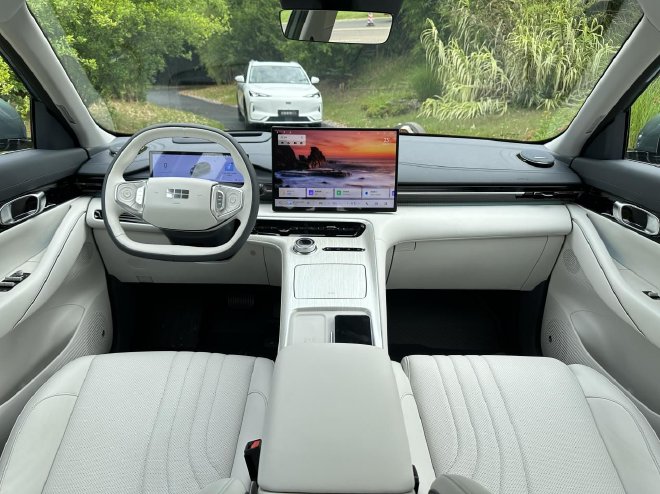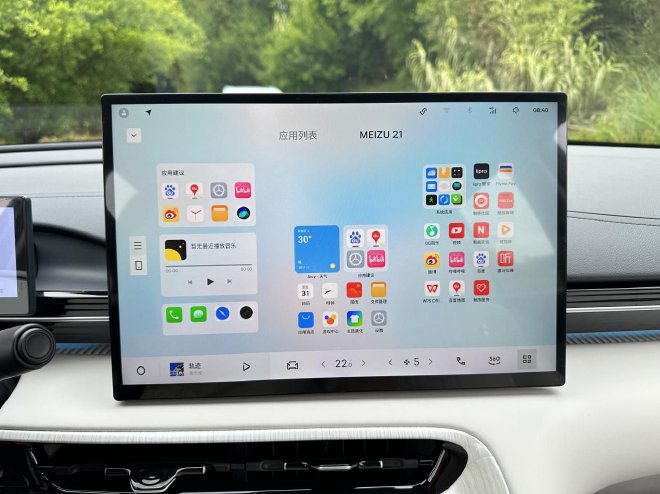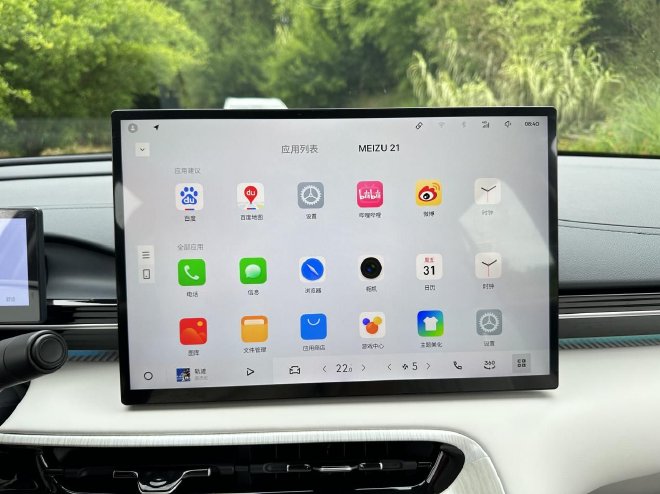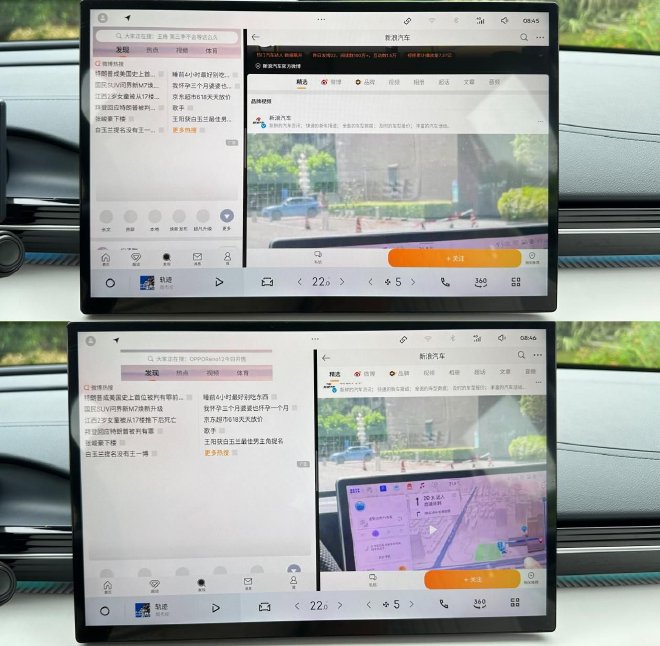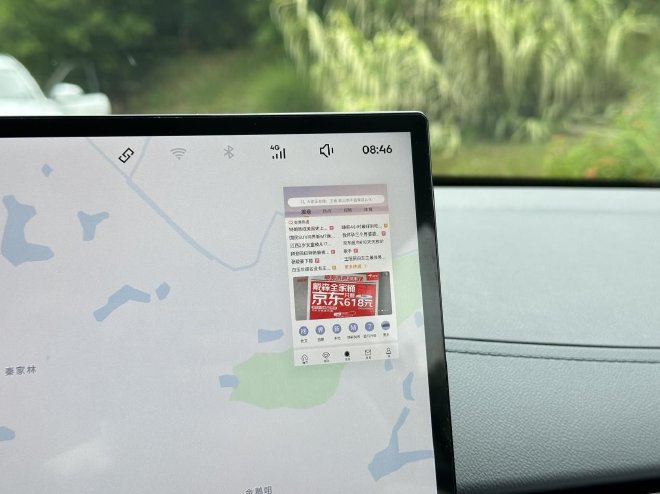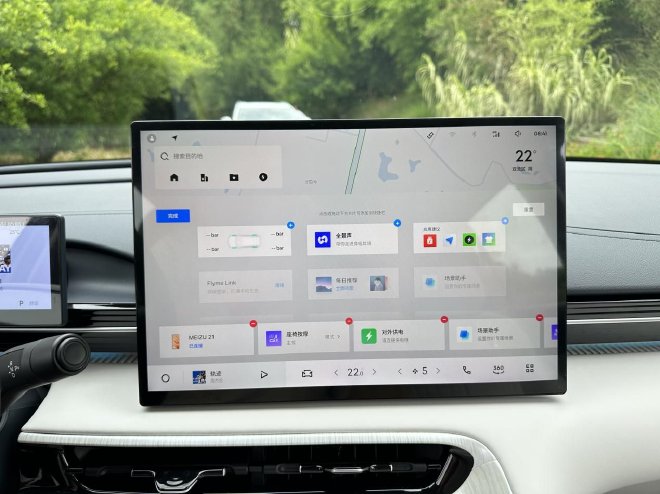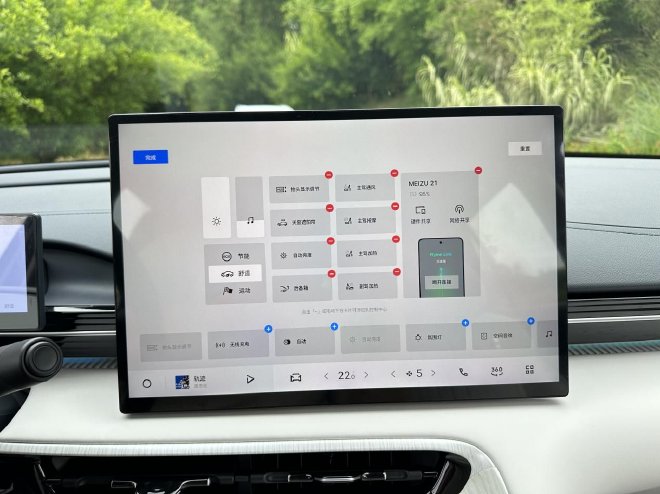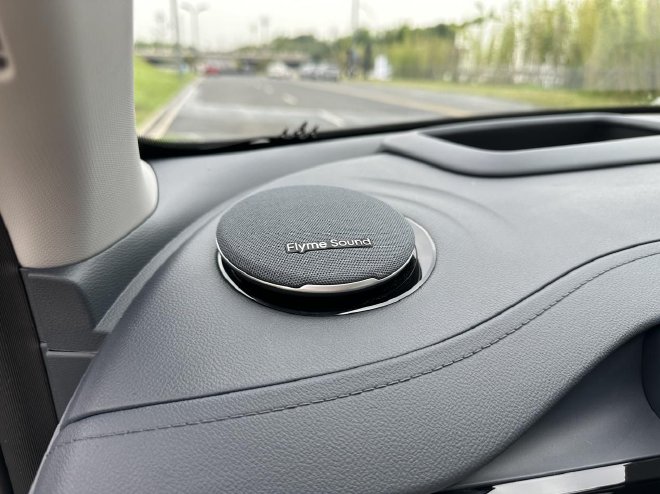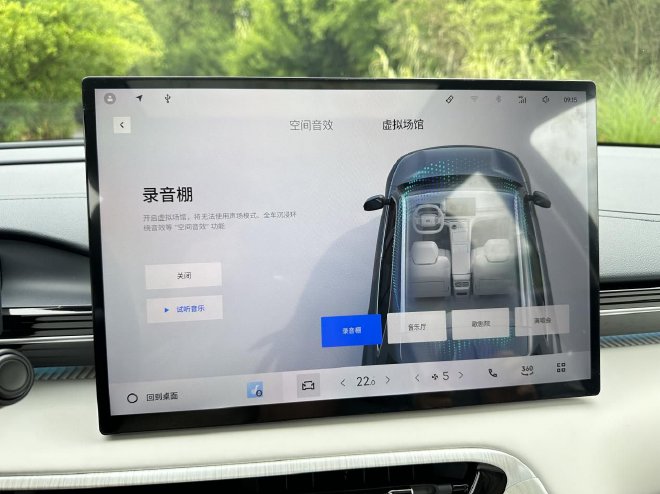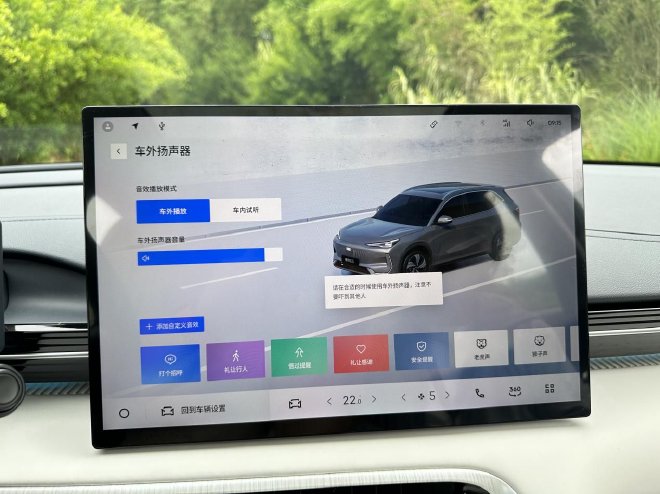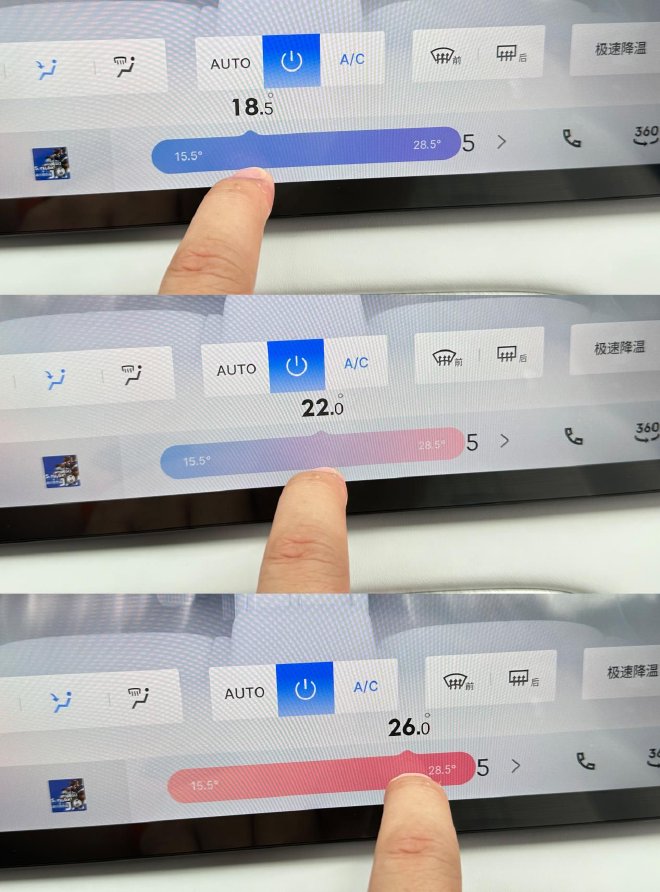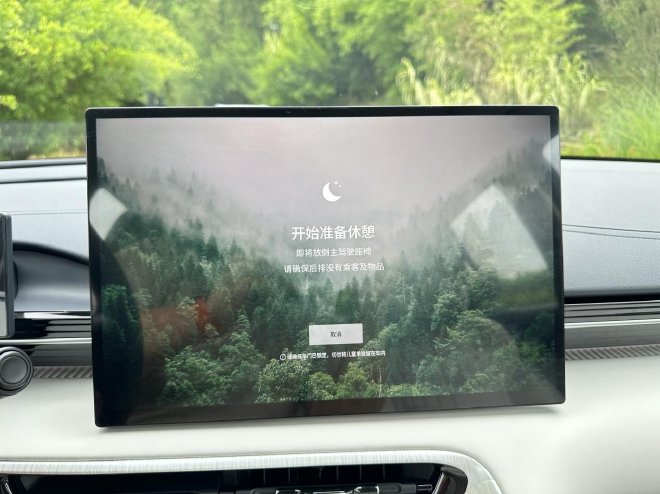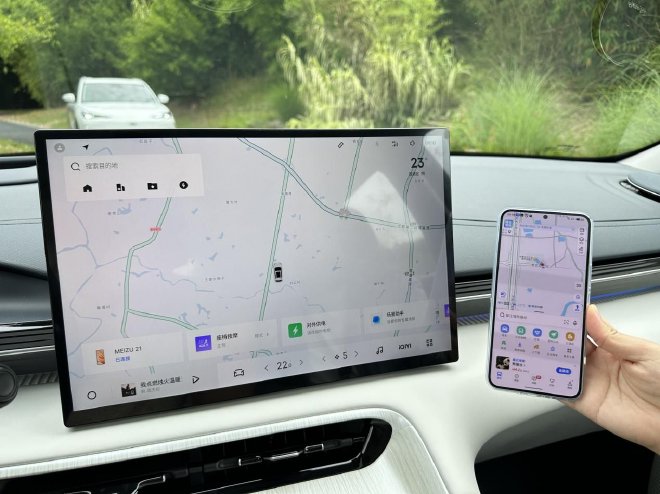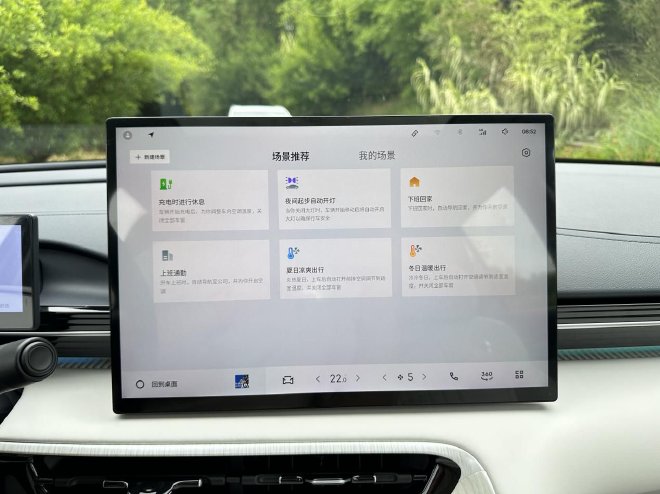As the second car in the Geely Galaxy E series, the Galaxy E5 has attracted the attention of many consumers since its release. It can be said that the Galaxy E5 is a car that Geely has put a lot of effort into, equipping you with the latest technology such as the GEEA 3.0 electronic electrical architecture and the God Shield short sword battery.
In addition, the Galaxy E5 has a major highlight, its car machine. As Geely’s first car with Meizu’s Flyme Auto car machine, we have high expectations for its intelligence performance. Let’s experience it together and see how powerful Flyme Auto really is.
The car machine interface is very familiar, similar to Huawei’s Hongmeng car machine layout. The bottom is the Dock, with a row of small components above. The overall appearance of the car machine page is very good, thanks to Meizu’s excellent UI design skills. Meizu may not sell phones well, but you can’t say Meizu’s aesthetics are not online.
Unlike Hongmeng Car Machine, Flyme Auto has two different theme desktops. You can choose them by sliding down the control center. The wallpaper desktop is similar to the design of Hongmeng Car Machine, but the optional wallpapers are more attractive, selected in the form of sets of pictures, allowing for quick switching by sliding left and right. It also supports custom wallpapers, so you can use beautiful landscape photos you took or family portraits without any problems.
Another option is the map desktop, similar to most current car systems, displaying a large map, very practical. In fact, Flyme Auto also supports a control car desktop on the Lynk & Co 08, which can control some simple functions of the vehicle on the desktop, such as opening the trunk, doors, windows, etc., but on the Galaxy E5, this desktop has been optimized out.
It is worth mentioning that the Galaxy E5 is equipped with the domestically produced Dragon Eagle I chip, which is manufactured using 7nm process technology. The chip’s computing power is said to be twice that of the 8155, with AI computing power reaching 8TOPS. The addition of this chip also brings considerable smoothness to the Galaxy E5’s infotainment system. The size of the central control screen is 15.4 inches, which is considered mainstream for its class. It has a resolution of 2560×1600 pixels, with a PPI of up to 197, providing very delicate visual effects and thin bezels. However, the screen’s touch response is not very smooth compared to HarmonyOS.
The layout of the application center is similar to APPLE TV, with a moderate number of commonly used apps.
Connecting your phone allows you to access the borderless desktop, which mirrors your phone screen. It seamlessly adopts your phone habits, making it highly efficient to use.
If you like tablet-like operation, you can switch to a tablet view. With Infinite Desktop, all the apps on your phone can also be used on this car system. It does not use the car’s computing power, but rather the phone’s computing power.
If your mobile app is niche and not optimized for large screens, Flyme Auto can still be opened on the car display, but in a smaller window that mirrors the phone layout. You can freely drag the app to different positions, making it very practical.
Of course, Flyme Auto adapts most mainstream apps for large screens. Full-screen apps can be displayed in split-screen mode, allowing users to adjust the proportions by dragging the dividing line.
If you want to operate it later, you can hang it up. It’s not operable now. Click to open when convenient. It’s quite thoughtful. It’s really friendly for us forgetful elderly. Sometimes I suddenly forget what I was going to do.
The lower Dock bar supports customization, limited to the small area on the right side. Special icons were designed for the app to maintain UI consistency. Only Meizu could achieve such detailed design.
The widgets on the Dock bar also support custom editing, with more freedom.
The notification bar supports custom editing, including brightness, volume, and driving mode, with the rest of the area supporting custom arrangement.
The voice recognition of the Galaxy E5 car system deserves praise. It not only supports continuous voice command control, but also responds very quickly. When multiple commands are given, the system quickly completes the corresponding operations without much delay or waiting for all commands to be issued.
The Galaxy E5 is equipped with the Flyme Sound Unlimited Sound System, 1000W independent power amplifier, 16 speakers, which is quite competitive in the same class.
In the Geely Star E5 car’s infotainment system, you can choose different virtual effects. According to the official, it is based on acoustic expert’s analysis and research, combined with sound algorithm design, to design different sound effects, maximize the restoration of recording studios, concert halls, opera houses, and concerts’ high-quality sound effects.
In the car, we found an interesting point: the Galaxy E5 also has exterior speakers. It can replace the stereo while camping, allowing you to enjoy music anytime, anywhere, and greet friends outside the car. What’s even more interesting is that this car also supports remote control from outside due to the microphone and speaker design.
There is another small detail that I personally really like, which is the design of the temperature adjustment area in the air conditioning control zone. When you slide to adjust the temperature, a color-changing effect will be generated according to the temperature, allowing the operator to read the temperature status more intuitively. This is something I haven’t seen in other car models. Though it is a small detail, it is interesting and useful.
Nowadays, car systems like to include a rest mode, and the Galaxy E5 is no exception. It simply helps you recline the driver’s seat and play some soothing music.
Flyme Auto seamlessly integrates phone with car infotainment system. Navigation, calls, and music transition smoothly from phone to car. Requires Meizu phone with Flyme OS. Limited by low Meizu phone ownership.
The scene design in Flyme Auto is quite innovative. Vehicles can automatically perform operations in different scenarios. The customization options are highly flexible. For example, the air conditioning automatically switches to 3rd gear at 20 degrees when the temperature inside the car exceeds 28 degrees. Various details such as battery life, weather, door and window status, lighting status, and seat belt status can also be customized in the scene design. There are many functions that can be automatically controlled in these scenarios, including navigation, music, air conditioning, defrosting, child lock, lighting, and applications. In summary, the above content basically covers the entire Flyme Auto car experience. Some may argue that a car should focus on mechanical qualities, so why evaluate the car machine? Friend, it’s 2024, the era where mechanical qualities reign is long gone! Undeniably, the car machine greatly enhances the user experience. Anything that enhances user experience deserves praise. Speaking of which, currently, Harmony OS is widely recognized as the best car machine. However, overall, Flyme Auto is not inferior to Harmony OS in terms of overall performance except for the touch operation. What’s more, you can own this car for just over a hundred thousand, while the cheapest model equipped with Harmony OS car machine costs how much? That’s where the cost-effectiveness comes in!
